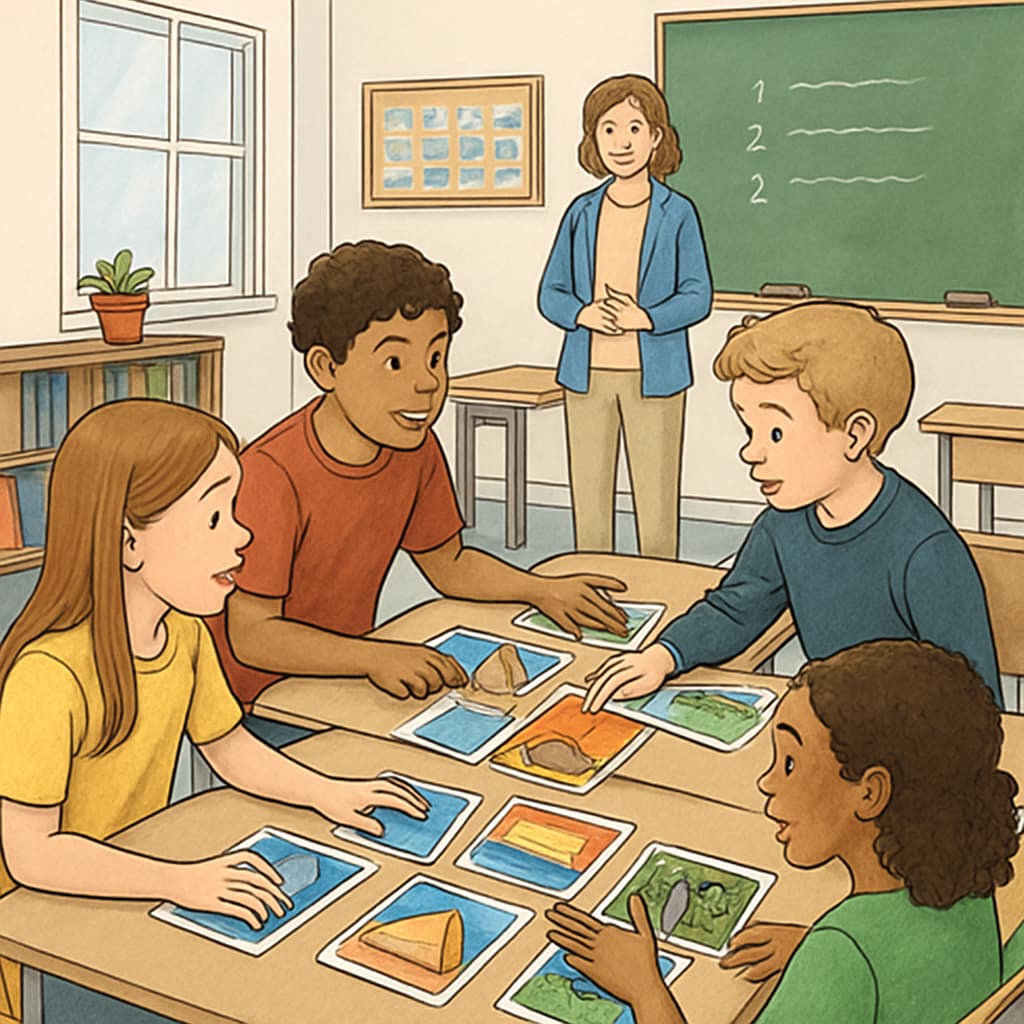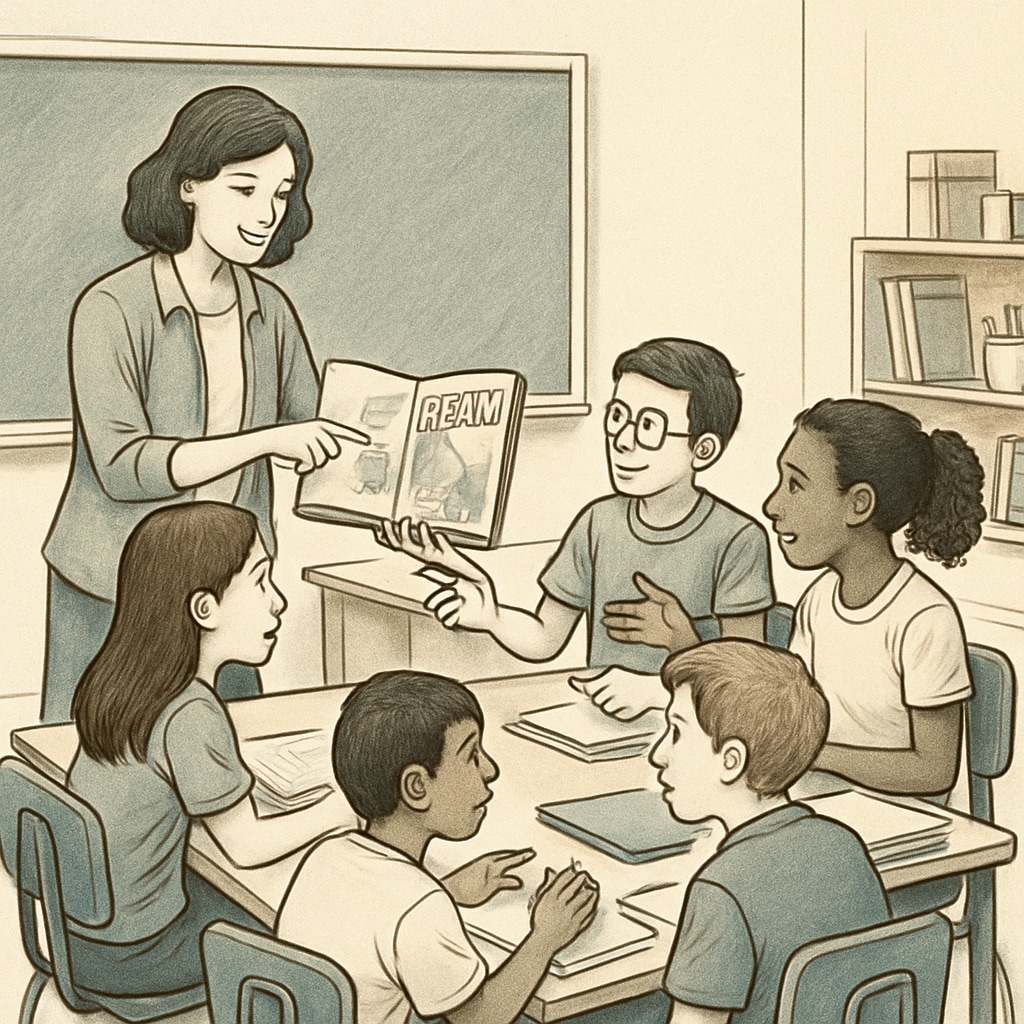In K12 education, innovative tools like Zoom/ReZoom teaching activities have emerged as effective ways to foster student observation, critical thinking, and classroom engagement. These activities, based on sequences of images or illustrations, challenge students to work collaboratively to identify patterns, narratives, and logical connections. However, managing resources, especially the answer sequence, can be a challenge for educators. This article explores the educational value of these activities, provides practical implementation tips, and addresses common difficulties in resource management.
What Are Zoom and ReZoom Activities?
Zoom and ReZoom are visual storytelling tools where each page or card presents an image that is part of a larger sequence. In Zoom, the images progressively zoom out, revealing a broader context, while ReZoom does the opposite, zooming in to uncover smaller details. These activities, popularized by Istvan Banyai’s books “Zoom” and “Re-Zoom,” are widely used in classrooms to develop critical thinking and teamwork skills.
The key to success lies in students arranging the images in the correct sequence without seeing each other’s cards. Each student must describe their image, listen to others, and collaboratively determine the correct order. This process enhances communication, logical reasoning, and active listening.

Benefits of Zoom/ReZoom Activities in the Classroom
Zoom/ReZoom activities offer several educational benefits, making them ideal for K12 classrooms:
- Improved Observation Skills: Students learn to pay attention to details and recognize patterns in visual materials.
- Enhanced Logical Thinking: Arranging images in the correct order requires deductive reasoning and problem-solving.
- Teamwork and Communication: Students must articulate their observations clearly and work collaboratively to succeed.
- Cross-Curricular Applications: These activities can be used in language arts, science, social studies, or even art classes to explore themes and narratives.
As a result, these activities not only promote cognitive skills but also social and emotional development.
Implementing Zoom/ReZoom Activities Effectively
To make the most of Zoom/ReZoom activities, consider the following tips:
- Prepare Materials: Obtain a set of Zoom or ReZoom cards, either by purchasing the books or creating your own sequence. Ensure the images are clear and large enough for group work.
- Set Clear Rules: Explain the activity’s objective and emphasize the importance of teamwork and communication. Each student should have a card and describe it without showing it to others.
- Start with Small Groups: Divide the class into small teams of 4-6 students to ensure everyone has an active role.
- Encourage Reflection: After completing the sequence, discuss what strategies worked and what could be improved. This reflection reinforces learning outcomes.

Managing Resources and Answer Sequences
One common challenge for educators using Zoom/ReZoom activities is managing resources such as the answer sequence. Losing or misplacing the correct order of cards can disrupt the activity. Here are some strategies to address this:
- Digital Backups: Take photos of the correct sequence and store them on your computer or cloud storage for easy reference.
- Laminated Guides: Create a laminated cheat sheet with the correct answers to ensure durability and quick access.
- Label Cards: Number each card discreetly on the back to indicate its place in the sequence, but ensure students can’t see the labels during the activity.
- Online Resources: Utilize online forums and teaching communities where educators share tips, resources, and even downloadable answer keys.
By implementing these measures, teachers can minimize disruptions and focus on the educational benefits of the activity.
Conclusion
Zoom/ReZoom teaching activities are powerful tools for enhancing observation, logical reasoning, and teamwork in K12 classrooms. With proper implementation and resource management, these activities can transform ordinary lessons into engaging, collaborative experiences. Whether you’re an experienced educator or new to these tools, remember that preparation and adaptability are key to success. As a result, your students will not only enjoy the process but also develop skills that extend far beyond the classroom.
For further insights into the educational applications of storytelling and visual activities, explore resources like visual learning strategies on Britannica.


